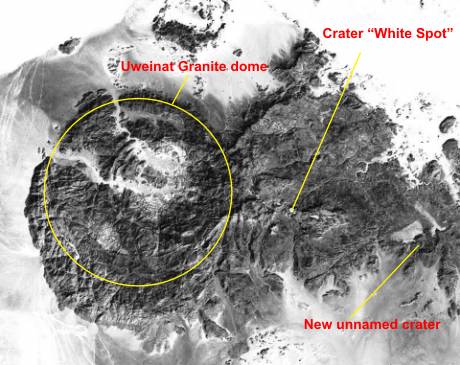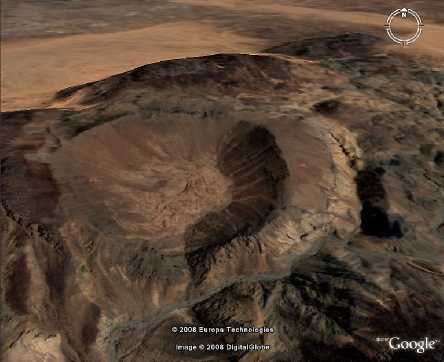New granitic ring-dyke intrusion was found in the Jebel Uweinat (Sudan)
Update: 23.04.2013
|
|||||||||||||||||||||||||||||||||||||||||||||
| Andras Zboray
has realized his plan to explore the crater in April 2012 along with a group
of like-minded. It is now document that the crater is a granitic intrusion.
The special is a towering circular ring-dyke at the outer edge of the intrusion. Now Andras Zboray told me that the ring-dyke of the crater consist of two distinct igneous rocks: A hard rock lies on top of the dyke, and a soft tuff-like material is below in the dyke. The tuff-like deposits also characterize the eastern foothills of the crater within several 100 m. On Andras Zboray's website the crater and the volcanic embossed foreland with multiple photos are well documented. Gabor Merkl, participant of the field trip, has sent me eight further photos. |
|||||||||||||||||||||||||||||||||||||||||||||
|
|
|
||||||||||||||||||||||||||||||||||||||||||||
|
Typical "Woolsack weathering" of granite on bottom of the crater |
|||||||||||||||||||||||||||||||||||||||||||||
|
|||||||||||||||||||||||||||||||||||||||||||||





















